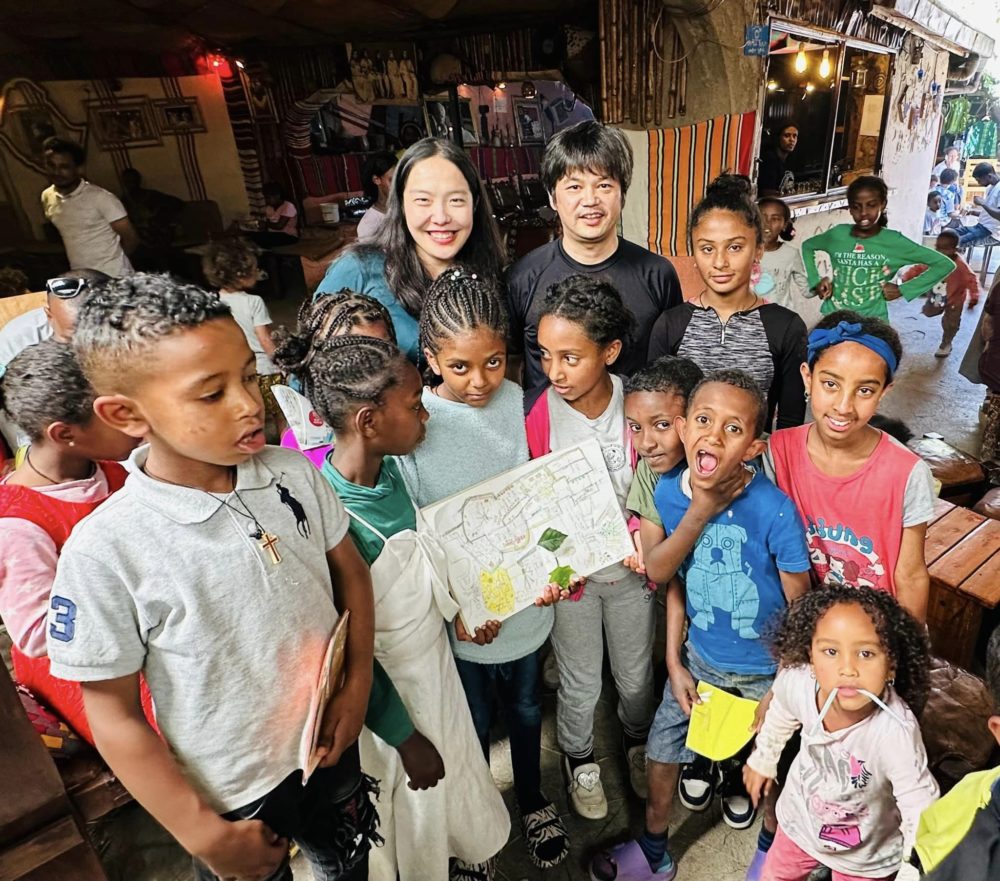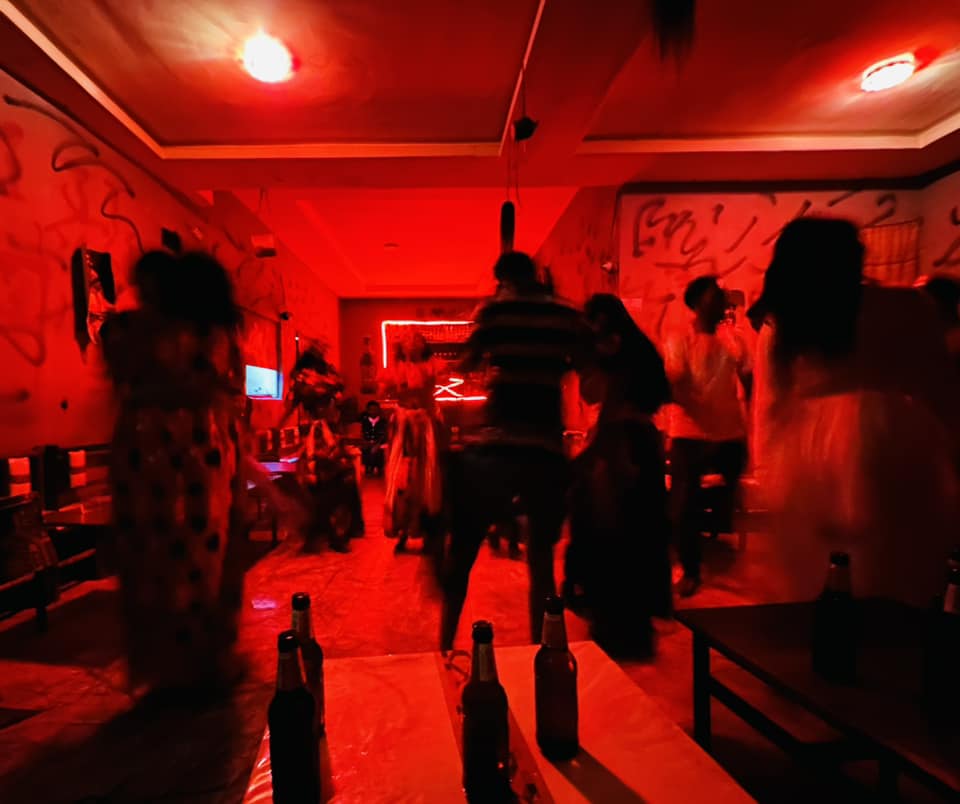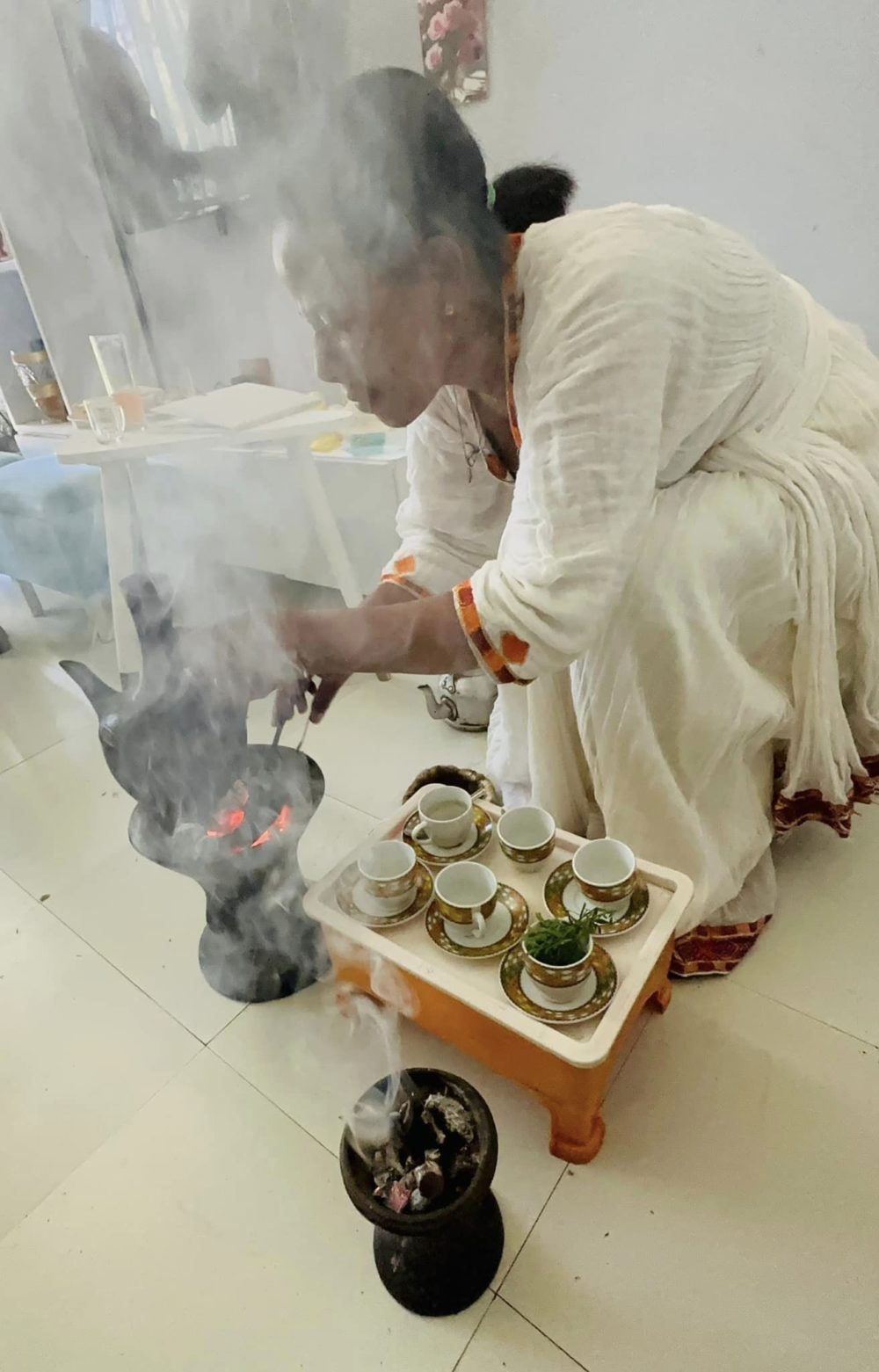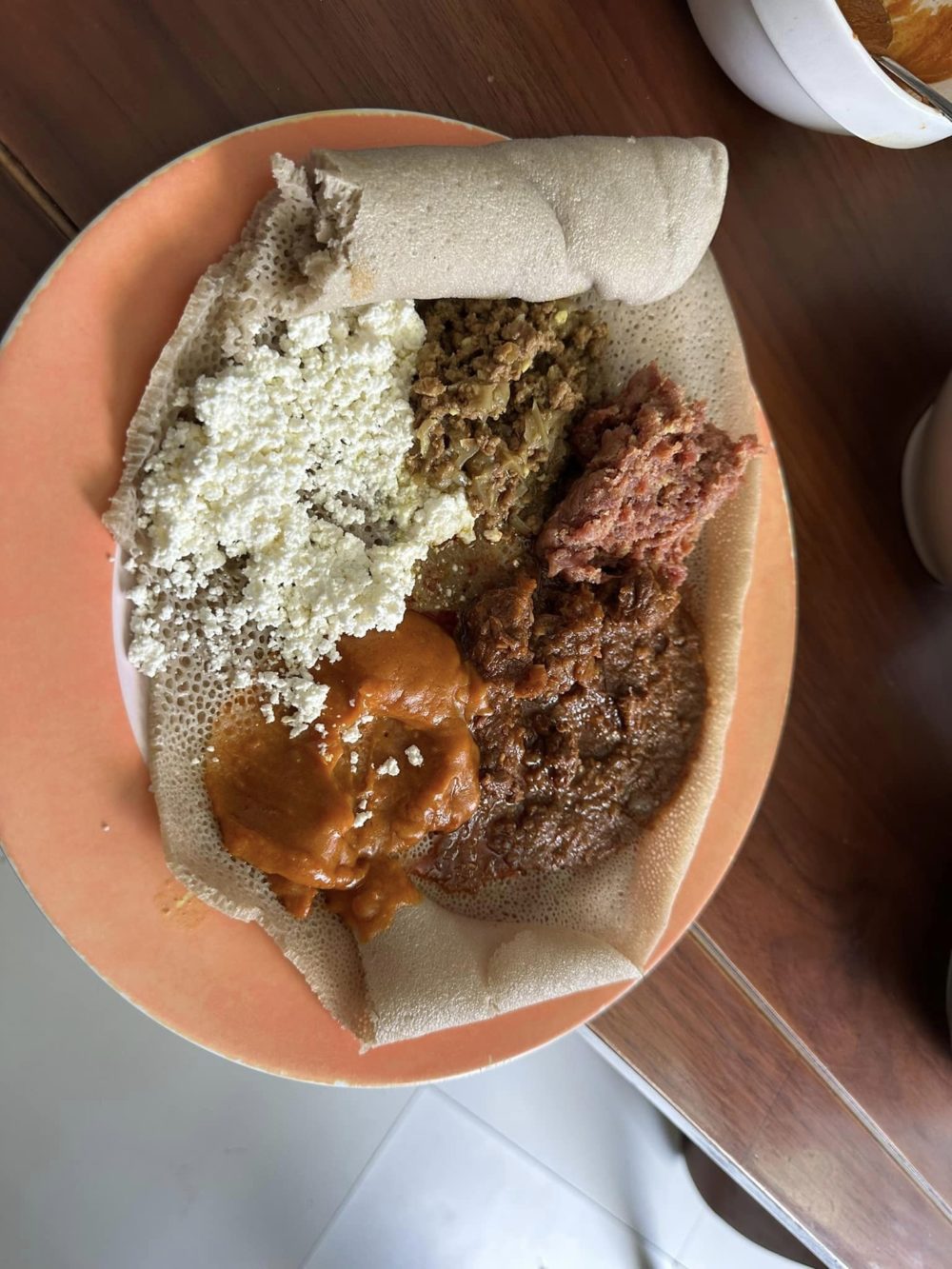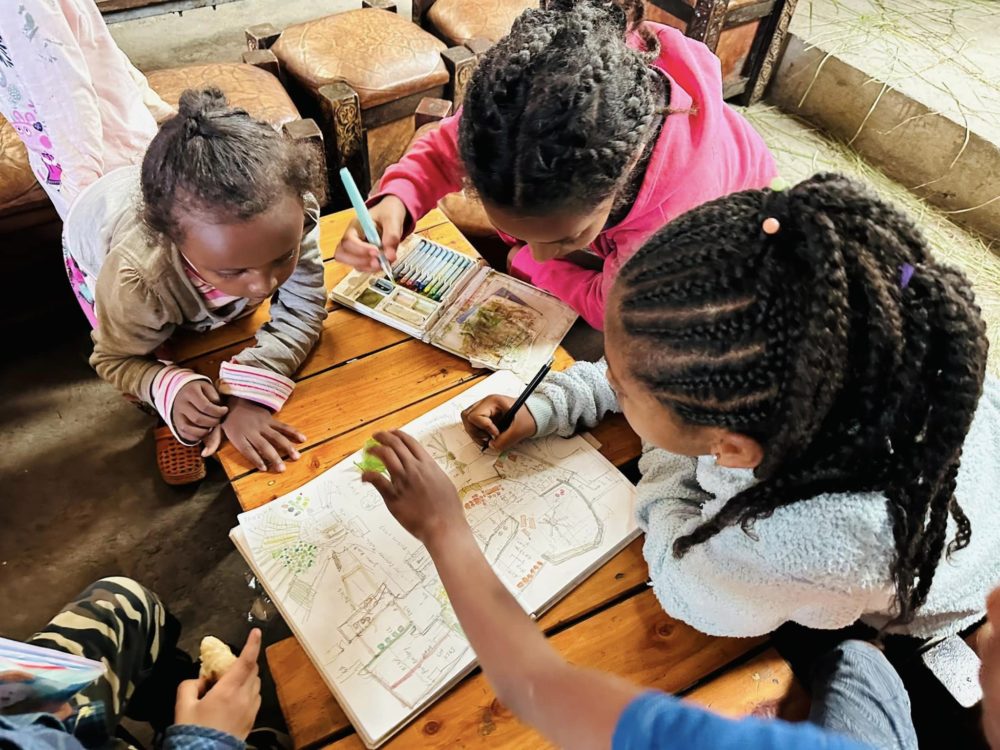Addis Ababa
2024.03.19
The experience of leaving my body and dancing until midnight at Azmari Bet, a bard’s pub was an intense sensation that made me forget everything. The sound of the masenqo, a single-stringed bowed lute of Ethiopia, the unique dance rhythms like jellyfish that continuously rocked my body and joints, and the resonance of physical dancing in the dimly lit, crowded, thin air gradually put me in a trance. Just when I thought it was almost over, the rhythm picked up again, and for two hours straight, I drank a distilled spirit called Arak. Addis Ababa is located at an altitude of over 2300 meters above sea level, so it was hard to breathe. It is Azmari Bet that pushes me over the limit.
At noon, we had a meal at Tafari’s house, and at the end of the meal, we had coffee, which is the same as the Japanese tea ceremony culture. At first, we were served with injera, a crepe-like dough made from fermented rice flour, in which beans, meat, and vegetables are stewed and wrapped. The coffee we were served after the meal began with a charcoal fire, followed by roasting the green beans in a clay frying pan, grinding them in a small mortar called a mukeccha with a stick through the beans, and pouring it into a round-bottomed pot with hot water. Bathed in frankincense smoke, I drink a small cup of Tena Adam, an herb with a strong aroma, steeped in coffee. The taste is a refreshing yet clean blend of coffee and fresh herb, with no bitterness at all.
Yesterday, at the Little Ethiopia, a restaurant in Yotsugi, Tokyo, cultural anthropologist Itsushi Kawase told me about the ritual of inviting spirits into a space through that suffocating, frankincense smoke that I felt in Ethiopia.
Let’s return to the story of Addis Ababa. At noon, Sachiko Nakajima and I went to Fendika, a very pleasant place with a series of irregularly sized spaces that looked like an extension of a barracks (crowded at night with Azmari Bet and live music venues, but a place for children by day), where there were many children and we measured and sketched together. The kids insisted on drawing with the mysterious orientalists, and they were very creative, trading pens and paintbrushes, and the sketches were finished in no time at all. Melaku Belay, the owner of Fendika, was a street child but was saved by growing up in a place like Azmari Bet. He told me with passion that this is why he keeps this place going. He also said that he is an Architect. It was a survey that made me feel with my body that Africa has an origin of life beyond my imagination.
アジスアベバ
アズマリベット(吟遊詩人酒場)で深夜まで踊った体験は、身体を預けることで何もかも忘れてしまう強烈な感覚だった。マシンコ(エチオピアの弦楽器)の音色、独特な身体や関節を連続的に揺らすグラゲダンスのリズム、密で薄暗く薄い空気の中、肉体的な踊りの共鳴で、だんだんとトランス状態になっていく。終わるかな?と思うとまたレベルが一段と上がるリズムと勢いで、2時間ぶっ通し、アラケという蒸留酒を飲みながら、アジスアベバは標高2300m以上の土地なので息も苦しく、限界値を超えていく感じがアズマリベットだ。
昼タファリさんの家で食事と最後コーヒーを頂いたがこれは日本の茶の湯文化と同じだ。最初はインジェラという稲科の粉を発酵させて作るクレープのような生地で、豆や肉や野菜を煮込んだものをインジェラで包んでいただく。最後の方、コーヒーは炭を焚くことから始まり、土のフライパンで生豆を煎るところから始める。その後小さな「ムカチャ」と言われるすり鉢で豆を棒を刺しながら挽き、丸底のポットにお湯と共に入れる。乳香の煙を浴びながら、小さなカップに「テナ・アダム」という香りが強烈なハーブをコーヒーに浸して飲む。味はスッキリとした中にもコーヒーと爽やかなハーブがブレンドされて、苦さは全くなく、とても美味しい。
昨日は四つ木のリトルエチオピアで文化人類学者の川瀬慈さんから、この息苦しさと乳香の煙によって精霊を空間に呼び込む儀式のことや、空間の密度が高くないと来ないので、光や匂い、煙、意識を空間にいっぱいに満たさないといけないことなど教えてくれた。
中島さち子さんと昼にバラックが増築したような不定形の大きさの空間の連続がとても心地よいフェンディカ(Fendika、夜はアズマリベットやライブハウスで昼は子供達の居場所)にいくと、子供達がたくさんいて、一緒に実測とスケッチをした。子供達はペンや絵筆を取り合って不思議な東洋人?と描きたい!とすごいクリエイティブなパワーで、あっという間に仕上がった。フェンディカのオーナーのメラク・ベレイさんは小さい頃孤児?だったがアズマリベットのような場所で育って、救われた。だから私はここを続けていると熱量を持って語ってくれた。自分はアーキテクトだとも。ますますアフリカが自分の概念を超える生命のオリジンが存在することを身体で感じた調査だった。
